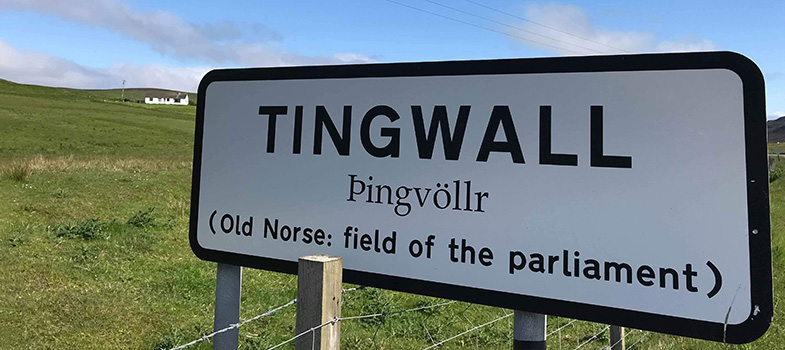2.3 New uses and new vocabulary
In this section you will learn about Scots vocabulary which has been repurposed to meet the needs of the modern world. In addition, you will explore further ways in which contemporary Scots deals with new objects and concepts.
As we have seen, Scots is a living language being spoken by 1.5 million people. There is a belief among some that Scots is dying out due to traditional ways of life and industries dying out and changing. Lewis Grassic Gibbon commented on this process in his 1932 novel Sunset Song:
“Two Chrises there were that fought for her heart and tormented her. You hated the land and the course speak of the folk and learning was brave and fine one day and the next…you wanted the words they’d known and used, forgotten in the far-off youngness of their lives, Scots words to tell to your heart.” (p. 37)
However, Scots has long been repurposed and adapted for modern life. Few Scots speakers who long for lowsin time (the end of the working day, a time when one is lowse - free) have ever worked with plough horses or can have any clear idea that this term was once applied to yoked animals only. It is long since many Scots had to spread their drying washing on walls in summertime, yet the term winterdyke has come to be used for a clothes horse: “…with one mended featherstitch jumper drying /among the nappies on the winterdykes…” (Lochhead, L. Bagpipe Muzak, 1991, p. 55).
Billy Kay reports on the relatively modern use of wappenshaw (weapon-s(c)hawing – a muster exercise), a word which could have been presumed to have become obsolete along with general mustering: “Yet it is a word in common use among the bowling fraternity in the west of Scotland, describing a competition day when one club plays against another.” (Kay, B. Scots: the Mither Tongue, 1986, p. 133).
Modern technology is moving so quickly that language has to change or be created to keep up. Indeed, this process has been ongoing for centuries. In addition to recycling vocabulary for use in new ways, Scots, in common with other languages, invents neologisms. English creates words in various ways and so does Scots.
An example of this in Scots is Sitooterie. The idea of a structure in an ordinary residential building dedicated to sitting out, such as a conservatory or gazebo, is a reasonably modern phenomenon in Scotland. The term was coined and has come to be widely used in Scotland, and beyond (more on which later).
Similarly, the predominance of satellite and cable television has given rise to the term cooncil tele to describe those channels which are free-to-view and the somewhat older corporation juice (tap water).
Activity 7
The word dirl is a good example of a word which has come to have new uses. As you have seen in the DSL, it is widely used as both a verb and a noun and has several meanings. Its entries were supplemented in 1976 and 2005. Recently, the following was posted on the Scots Language forum’s Facebook page discussing a modern use of the word dirl.

- Translate this post, paying close attention to the last word and the modern twist to its use.
Answer
Here is our translation of the post:
Anybody think there’s anything wrong with saying you’re putting your phone on to vibrate?
Please note:
This translation relates to the definition 2.(1) given in the DSL for dirl [Tip: hold Ctrl and click a link to open it in a new tab. (Hide tip)] as an intransitive verb: Implying sound, motion or both: to vibrate, shake, rattle, reverberate; to emit a ringing sound when struck.
2.2 Older Scots vocabulary
